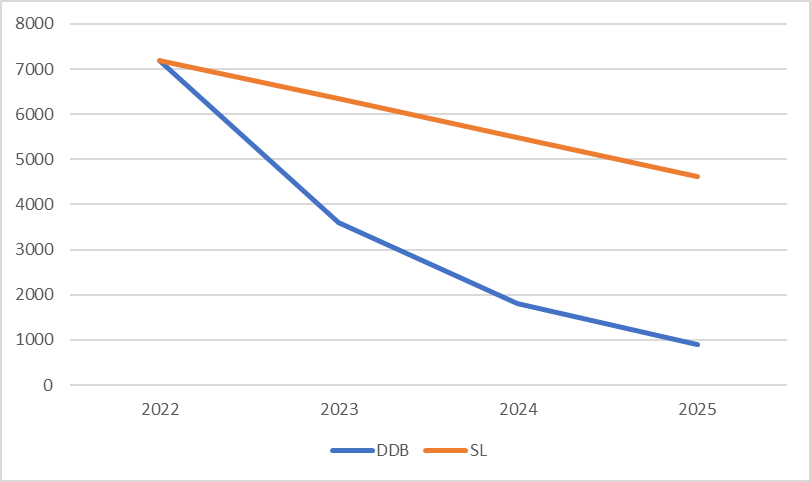There are many methods of depreciation, the calculations which depend on known values. For example, the most straightforward straight-line approach is ideal when the amount of useful asset life is known. It is calculated through the difference between the cost and the salvage value or the final cost at the end of the term, divided by this term (Gafurov et al., 2019). If this period is unknown, then the double-declining balance method is suitable, using the depreciation rate value and differentiating calculations by periods (Gafurov et al., 2019). Finally, the units of production approach assume that assets can produce products. Table 1 shows an example of depreciation calculation using the double-declining balance method for an asset worth $7200.
Table 1. Depreciation calculations using double declining balance.
Table 2. Depreciation calculations using double declining balance.
In order to understand the impact of depreciation on net income and total assets, it is necessary to compare two methods of its calculation: double-declining balance and straight line, adding a few conditions. It is assumed that this asset has a service life of 8 years, and its salvage cost will be $300. With revenue and the cost of other assets unchanged, the results of tables 1 and 2 looks as follows in Figure 1: the dependence on depreciation for both indicators is linear, and losses in it lead to the same decreases in both profit and balance sheet.

Depreciation affects the material side of the asset and allows the distribution of its value throughout its life. Depletion is a specific term for the extractive industry and means the distribution of the cost of extracting natural resources, including oil or timber (Gafurov et al., 2019). Finally, amortization is related to the intangible aspects of an asset and takes them into account over time. These methods are used in such accounts as balance sheet and income statement, equally affecting net income and total assets value by decreasing them. In addition, these expenses are recorded with the US Internal Revenue Service, reducing taxable income.
Reference
Gafurov, I., Kulikova, L., Sokolov, A., Shaykhutdinova, K., & Negreeva, V. (Eds.). (2019). Depreciation in the aspect of matching revenues and expenses of the company. E3S Web of Conferences, 110, 02046. EDP Sciences. Web.
